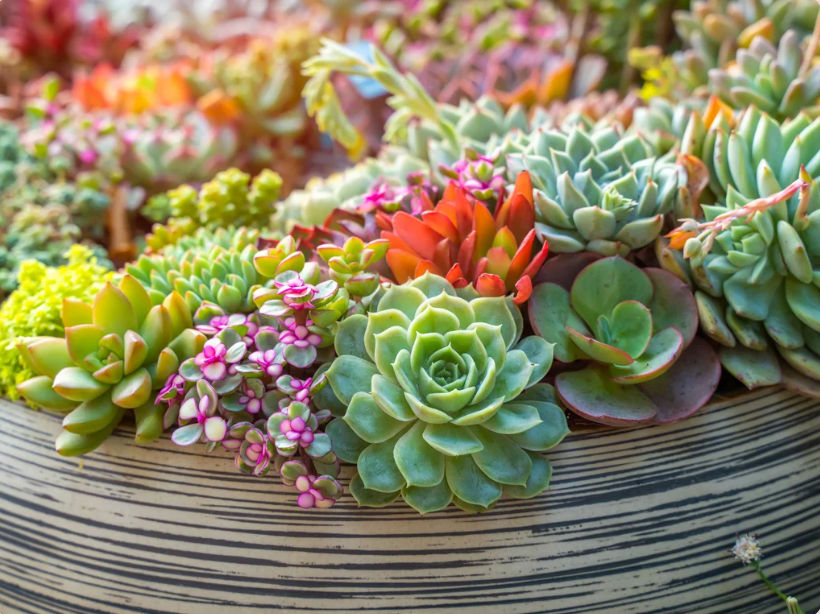
Common Problems for Succulents
Share
Succulents can have many issues that may raise concern for you. We'll briefly touch base on a few common problems that will help you the next time your succulents are suffering.
SYMPTOMS & DIAGNOSIS
- Brown calloused patches on leaves = Sunburn
- Older leaves turning yellow, transparent and soggy = Overwatered
- Leggy leaves or stretching = Inadequate light (reaching for sun)
- Irregular new growth = Pest issue
- Leaves that turned red/brown/black paired with beign soggy, slimy and bad odor = Rot
- Upper leaves getting wilted, wrinkled and crispy dry = Underwatered
- Collapsed, mushy, grey-yellow leaves = Frost
WHAT TO DO?
Sunburn
When leaves are sunburn and have burned brown there is not much you can do for them. You can simply remove the damaged leaves and adjust the amount of sun exposure your succulent receives. Most succulents prefer full indirect sunlight. Let your plant enjoy the sun through a thin curtain or a glass window to block harmful UV rays.
Overwatered
Cut back on watering. Water your soil only with completely dry to touch. If you water your succulents every week and notice signs of overwatering, this means your succulents are not liking it. Try switching to a two-week watering cycle. Make sure your succulent soil mix is well-draining and enouch for it to dry out quickly after being watered.
Inadequate Light
Ensure you provide your succulent with adequate sun exposure. Gradually introduce them to sun exposure to increase the amount of sunlight so they are not shocked and burn easily. You will need to adjust from full shade to partial sun to finally full sun over the course of several weeks. Rotate the planters ever week for even sun exposure to prevent lopsided growth.
Pest Control
Ensure to inspect your plant carefully to identify any pest issue. Typically succulents do not pose a big problem for pest. But if a pest problem does appear most of the time an infected succulent can be treated with insecticidal soap or mild insecticide.
Rot
Rot will start from the root up, therefore you will not notice any obvious changes on the plant itself until its too late to save it. Here are somethings you can do:
- Cut off all the rotten parts if the plant has just started to rot in a small specific region. Then let the uninfected part of the plant continue to grow.
- If possible, cut the stem well above the rotten part and propagate it. Sometimes it might be possible to re-root and grow into a new healthy plant.
- Avoid planting the body of your succulents so close to the soil to prevent the leaves from picking up some moisture from the soil, leading to rotting leaves.
- Improve ventilation, do not overwater and avoid leaving your succulents in a cold damp condition. Make sure your soil is porous, well drained and doesn’t hold water for an extended amount of time.
Underwatered
It is very easy to save an underwatered succulent. Water your succulent thoroughly until the soil is soaked and then let it drain completely. Ensure to always use a porous and well-draining soil mix that does not hold water for extended amount of time which can lead to root rot. Wrinkled leaves will perk up very quickly just after one or two watering cycles.
Frost
There are some cold hardy succulent species such has Sempervivum which can tolerate frost and enjoy cooler temperatures from 30 to 40°F. Other tropical species, such as Euphorbia and Liphops prefer temperatures of at least 50-60°F. Bring succulents indoors or cover them with frost cloth when temperatures start to drop below what they can tolerate. Prune any dead lleaves in the spring.